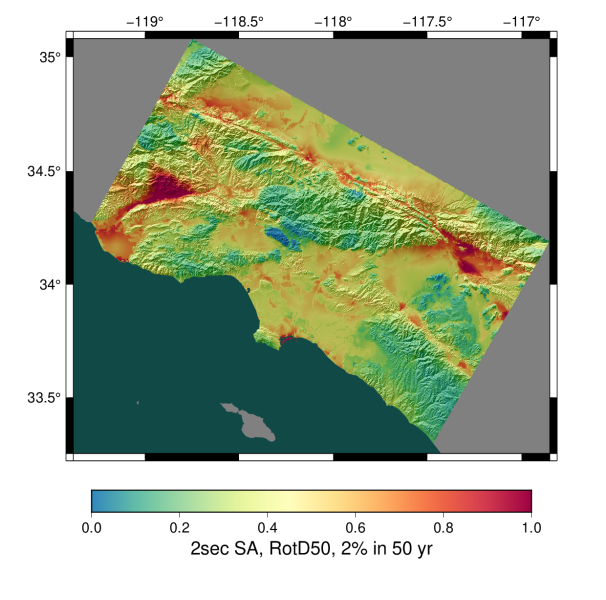SCEC (Statewide California Earthquake Center) recently completed Cybershake Study 22.12 that generated a hazard map for

Image Credit: Statewide California Earthquake Center.
Southern California which depicts what regions are expected to experience strong ground motions at least once in the next 2,500 years. In order to come up with this map, SCEC runs physics-based computational models on high-performance computing systems at the Department of Energy’s Oak Ridge Leadership Computing Facility’s Summit supercomputer. The Pegasus and SCEC teams have a long history of collaboration dating back to 2005. Over the years, SCEC has used Pegasus to conduct various Cybershake studies that have been conducted on the state of the art HPC resources of that time such as Teragrid, XSEDE, Titan, Bluewaters to name a few.
The recent news article “CYBERSHAKE STUDY USES SUMMIT SUPERCOMPUTER TO INVESTIGATE EARTHQUAKE HAZARDS” from OLCF provides more details of the latest study. Some interesting numbers from the article are quoted below
“CyberShake generates seismic hazard models by incorporating a vast array of existing seismic data. Using the probabilistic seismic hazard analysis method, CyberShake estimates the intense ground motions that a specific site is likely to experience in the future. Those estimates are incorporated into regional hazard maps and used to inform scientists, civil engineers and the public of earthquake risks.
To calculate the CyberShake 22.12 hazard model, Maechling’s team used Pegasus, a workflow management system designed by research director Ewa Deelman and her team at the University of Southern California, or USC, Information Sciences Institute. Maechling’s team continuously ran a diverse collection of jobs on Summit over 10 weeks. Pegasus automatically managed 2.5 petabytes of data, which is equal to about 500 billion pages of standard printed text, including an automated transfer of 70 terabytes to USC’s archival storage.“